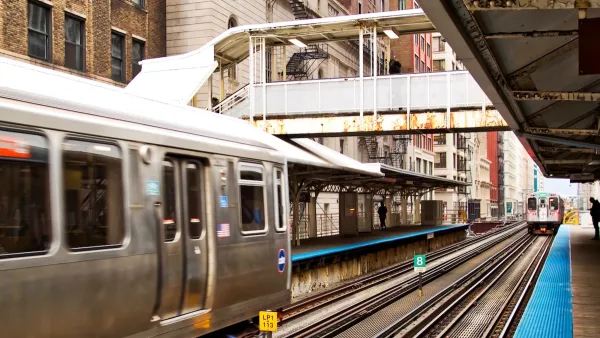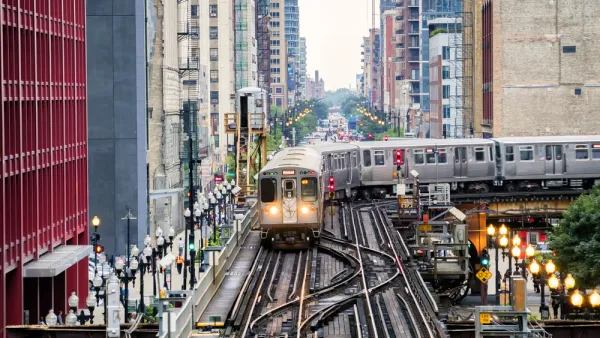Chicago's Metra commuter rail service has a big problem on its hands: Distressed people are resorting to using train tracks to end their lives at a higher rate than in other major cities. Would partnering with a suicide-hotline agency stem the tide?
"Signs on railway station platforms in Boston, New York and Toronto are intended to offer help to anyone who is emotionally distressed or suicidal _ a last-ditch effort to keep people from taking a final, fatal step onto the train tracks," writes Richard Wronski of the Chicago Tribune (and published in Governing.)
"As new research shows that a higher percentage of train fatalities in the Chicago area are suicides than in the rest of the U.S., some experts say it's time for Metra to consider adopting such a policy.
In addition to the person who ended his/her life, "officials say there are wide-reaching public consequences: Fatalities exact a heavy toll on train crews as well as on witnesses and emergency responders. The resulting investigations cause delays that can disrupt hundreds of commuters' lives," adds Wronski.
"Until now, reports on the effectiveness of suicide prevention efforts have been largely anecdotal, experts say," writes Wronski. "But results are due soon from a 36-month project called RESTRAIL, for Reduction of Suicides and Trespasses on Railway Property, that was conducted on Europe's rail lines."
Chicago's high rate of suicides may be attributed to several factors, according to "Northwestern University professor Ian Savage, who has done extensive research on the subject."
- "Nationally, about 30 percent of railroad-pedestrian fatalities are apparent suicides, versus 47 percent in the Chicago area, Savage said.
- "Savage attributes the higher incidence of railroad suicides in the Chicago area to the greater prevalence" of commuter, freight and inter-city trains. It's "the nation's second-busiest commuter rail network."
Surprisingly, the hotspots for suicide were not in the city but in the "the far suburbs in DuPage and Lake counties."
Wronski writes about suicide-prevention programs run by rail agencies on Long Island; in Boston, Japan, Toronto and Washington, D.C.
FULL STORY: Chicago Is Working to Prevent Train Suicides

National Parks Layoffs Will Cause Communities to Lose Billions
Thousands of essential park workers were laid off this week, just before the busy spring break season.

Retro-silient?: America’s First “Eco-burb,” The Woodlands Turns 50
A master-planned community north of Houston offers lessons on green infrastructure and resilient design, but falls short of its founder’s lofty affordability and walkability goals.

Delivering for America Plan Will Downgrade Mail Service in at Least 49.5 Percent of Zip Codes
Republican and Democrat lawmakers criticize the plan for its disproportionate negative impact on rural communities.

Test News Post 1
This is a summary

Test News Headline 46
Test for the image on the front page.

Balancing Bombs and Butterflies: How the National Guard Protects a Rare Species
The National Guard at Fort Indiantown Gap uses GIS technology and land management strategies to balance military training with conservation efforts, ensuring the survival of the rare eastern regal fritillary butterfly.
Urban Design for Planners 1: Software Tools
This six-course series explores essential urban design concepts using open source software and equips planners with the tools they need to participate fully in the urban design process.
Planning for Universal Design
Learn the tools for implementing Universal Design in planning regulations.
EMC Planning Group, Inc.
Planetizen
Planetizen
Mpact (formerly Rail~Volution)
Great Falls Development Authority, Inc.
HUDs Office of Policy Development and Research
NYU Wagner Graduate School of Public Service





























